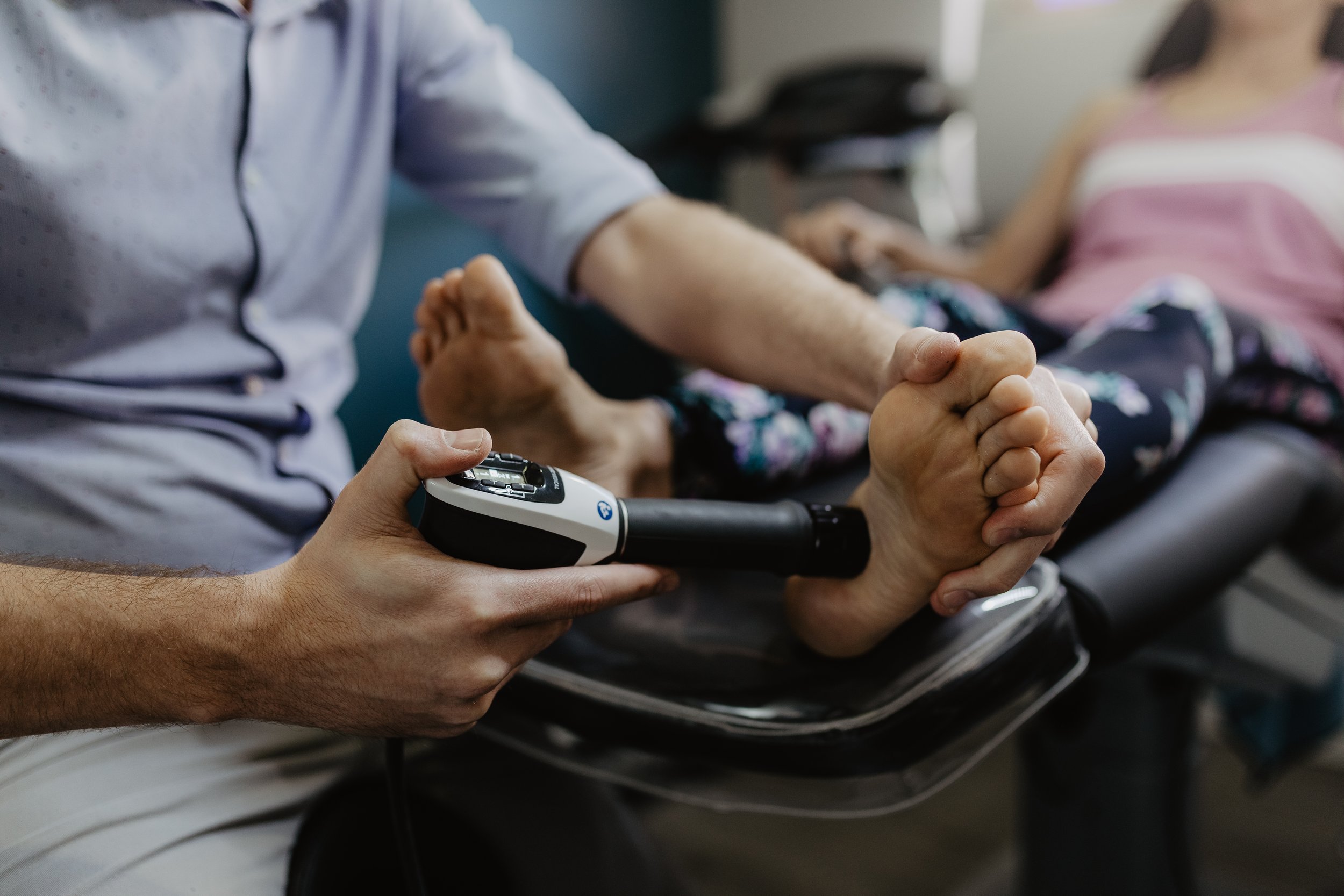What is Shockwave Therapy?
A Breakthrough Solution for Persistent Foot and Ankle Pain
If you’ve been dealing with chronic pain, slow-healing injuries, or persistent musculoskeletal conditions, you might have heard about shock wave therapy—a non-invasive treatment option gaining traction in both acute and chronic conditions. But what exactly is it, how does it work, and how many sessions do you need to feel the benefits?
What Is Shock Wave Therapy Used For?
Shock wave therapy—formally known as extracorporeal shock wave therapy (ESWT)—is a non-surgical treatment that uses acoustic waves to stimulate intrinsic healing in soft tissue, bone, and tendons. Originally developed to treat kidney stones, in the it’s now widely used for a range of musculoskeletal conditions, including:
The therapy is popular among individuals with chronic conditions who are looking for alternatives to surgery
How Does Shock Wave Therapy Work?
Shock wave therapy works by delivering high-energy sound waves to targeted areas of the body. These high-energy waves cause both the interstitial and extracellular makeup of our tendons and muscles to respond and begin the natural healing process. It is believed that shockwaves promote healing through the process of mechanotransduction (this is where cells change their genetic expression based on external stimulus to the tissue). These mechanotransduction-induced changes result in…
Increased blood flow: The shockwaves improve circulation by spreading nitric oxide through the tissue via a process called cavitation (image 1). This process brings oxygen and nutrients to the damaged tissue.
Collagen production: The therapy increases the genetic expression of key genes involved in the production of collagen within tendons and ligaments.
Breakdown of calcifications: In cases of calcific tendinitis, shock waves can help dissolve calcium deposits by opening calcium channels within cells.
Local Nerve Inhibition: Shockwave provides a local anaesthetic effect by stimulating the nerve fibres to release pain inhibiting molecules (Substance P)
Image 1. Image showing the two phases of shockwave; compressive (early phase) and cavitation (late phase). https://www.ems-dolorclast.com/dolorclastr-radial-shock-waves.
Recommended Treatment Doses
The number of treatments needed depends on the severity and duration of the condition. However, a typical course includes 3 to 6 sessions, usually spaced one week apart. Each session may deliver between 1,500 to 3,000 shock waves (takes about 3 - 5 minutes), depending on the condition being treated.
Some patients begin to notice improvements after just one or two sessions, but the full benefits may take several weeks as the body continues its healing process. Shockwave therapy also has a long-lasting effect where the intervention continues to promote natural healing for as long as 6 weeks after the final session of shockwave.
Is Shockwave Therapy Right For You?
If you’ve tried rest, orthotics, or physical therapy with little success, shockwave therapy could be your solution. Consult a qualified podiatrist to determine if you’re a good candidate.
Take The Next Step!
At JS Podiatry, we rarely use shockwave in isolation but instead as part of the treatment plan. Don’t let chronic foot or ankle pain hold you back. Book a consultation today and discover how shockwave therapy can help you get back to doing what you love!


